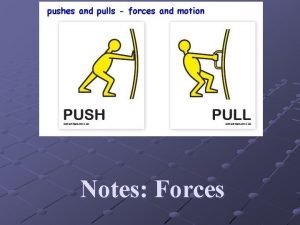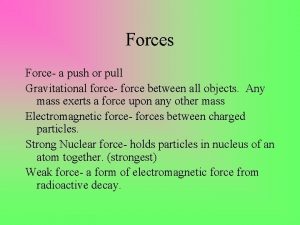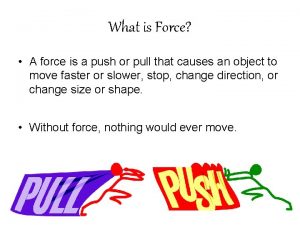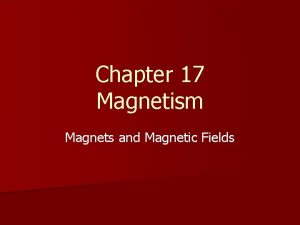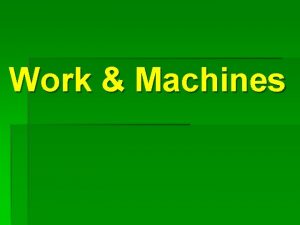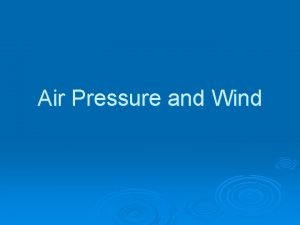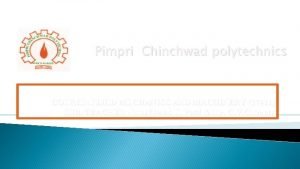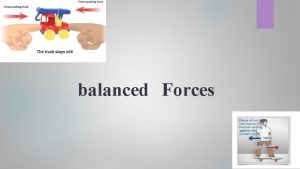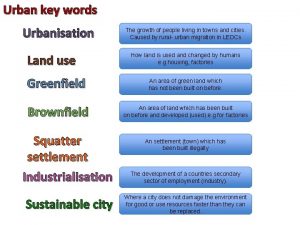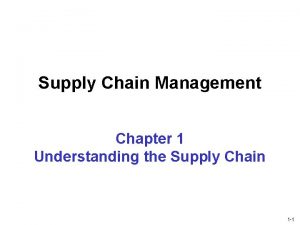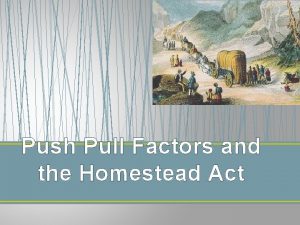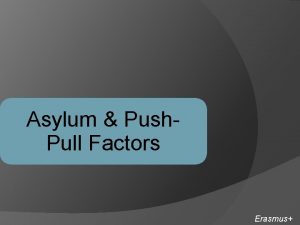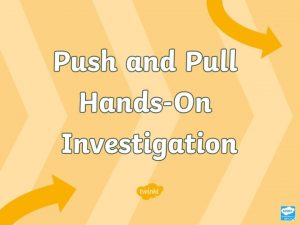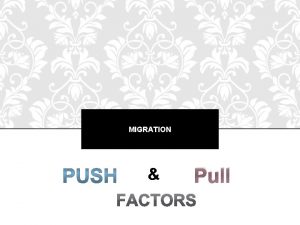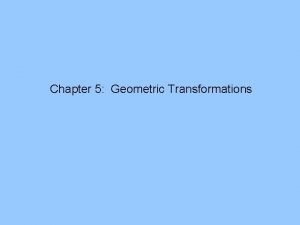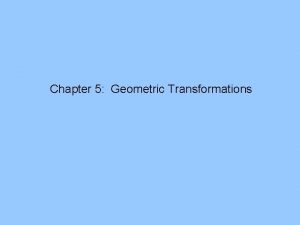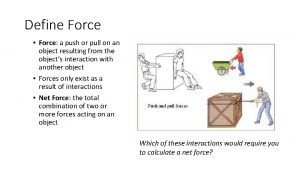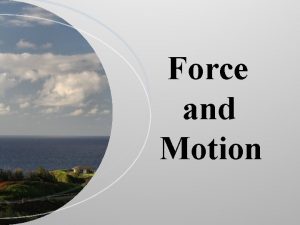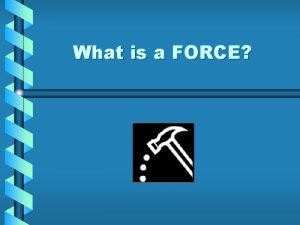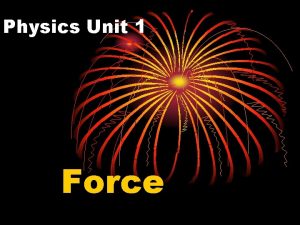Force Force Is a push or pull exerted

















- Slides: 17

Force

Force: • Is a push or pull exerted on an object in order to change the motion of an object. • Described by its strength and the direction in which acts. • Has size and direction • Can change acceleration of an object • Not all force leads to movement (ex: the chair you sit in) To find force: Force = mass x acceleration • Force is measured in Newton (N)


• Net force: – Is the total of all forces working on an object. • If the forces are going in the same direction, we add the forces together. • If the forces are going in opposite directions, we subtract the forces. –The result net force is always in the direction of the larger velocity.

• Forces may cancel each other out and produce no net force. • Try this! – What is the net force being displayed in this picture?

There are 2 types of forces: 1. Balanced forces: • When the net force on an object is zero. • Produces no change in the motion of an object. – An object that is not moving will stay motionless – An object in motion will maintain speed & direction.

2. Unbalanced forces: • When the net force on an object is greater than zero. • Produce a change in the motion of an object. – Motionless object will begin to move – Object in motion change its speed &/or direction

Friction – Is the force that opposes motion between two surfaces in contact with each other. • Friction can – Prevent motion from starting – Oppose motion in progress (cause things to slow down or stop) Flat wheels don’t work. Too much Friction. Duh!!

• Source of friction – Occurs because the surfaces of any object is rough – Microscopic hills and valleys of both objects stick together, this contact causes friction. • Amount of friction depends on two things 1. Type of surfaces 2. How much force is pressing the two objects against each other.

– The larger the force between the two objects, the more friction you have – The smaller the force between the two objects, the less friction you have. Smaller Force Larger Force

Three types of friction 1. Kinetic Friction • “moving” friction-between moving surfaces – Sliding friction: » Opposes the movement of objects across each other (ex: brakes on your bike)

– Rolling Friction: » Friction between wheels on an object & the floor or ground. » Is usually has less force than sliding friction

2. Static Friction • “not moving” • When force is applied to an object, but does not cause it to move • Disappears once object starts to move by applying a big enough force

3. Fluid friction • Friction between water and an object – Example: walking on a wet floor. The friction is between your feet & the water not your feet and the floor. • Friction between air and an object acts in the same way as friction between water and an object

Can we use friction? YES!! • Helpful ways: – Tires push against the ground to move the car – Breaks use sliding friction to stop the car – Enables you to write with the friction between paper & pencil – Enables you to walk (friction between your feet and the ground)

• Harmful ways: –Cause high temperature in engine parts, causing a break down –Puts holes in your socks & jeans –Causes erosion of top soil

• Decrease or Reducing Friction – 3 Ways 1. Using lubricants » Examples: oils, wax, and grease 2. Switching from sliding to rolling friction 3. Making surfaces smoother • Increasing friction – 2 ways 1. Make surface rougher 2. Increase forces pushing surfaces together
 How to calculate applied force
How to calculate applied force A push or pull exerted on an object
A push or pull exerted on an object Gravitational force push or pull
Gravitational force push or pull Type of force applied
Type of force applied Draw and label a picture of the earth's magnetic field
Draw and label a picture of the earth's magnetic field Right hand grip rule
Right hand grip rule Force exerted by a machine
Force exerted by a machine The force exerted by the air above is called
The force exerted by the air above is called Force exerted by jet on moving plate formula
Force exerted by jet on moving plate formula Angle of pull definition
Angle of pull definition What is the definition of balanced force
What is the definition of balanced force Push pull feedback
Push pull feedback Curitiba sustainable city
Curitiba sustainable city Scm cycle view
Scm cycle view Pull push
Pull push Chinese immigration push factors
Chinese immigration push factors Push factor definition
Push factor definition Integrated marketing communications examples coca-cola
Integrated marketing communications examples coca-cola

